-
Supporters of Pottery Making Illustrated — May/June 2024
-
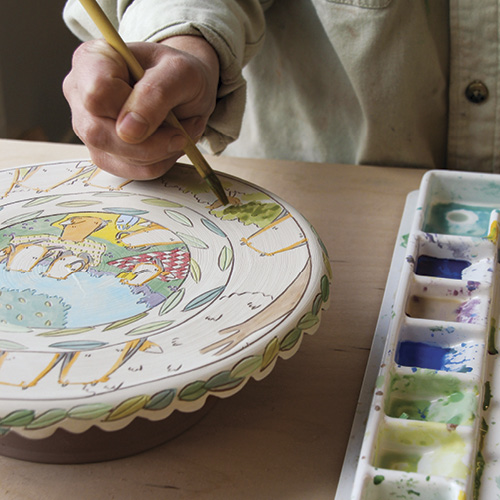 An Illustrated Cake StandI typically think of a memory, something that brings me comfort, joy, or makes me laugh, and illustrate it using animal characters.
An Illustrated Cake StandI typically think of a memory, something that brings me comfort, joy, or makes me laugh, and illustrate it using animal characters. -
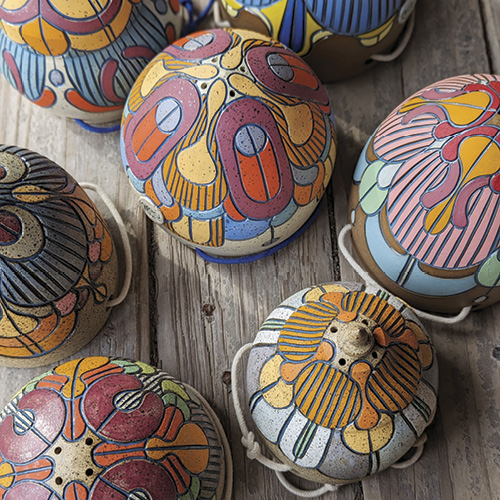 Hanging PlantersIn the development of my hanging planters, I played with the idea of giving function to a hanging sculptural object.
Hanging PlantersIn the development of my hanging planters, I played with the idea of giving function to a hanging sculptural object. -
 Coffee Pour-Over SetCoffee pour-overs were up and coming at that time in the clay community, and while I had never created one before, the challenge of developing new designs, making prototypes, and receiving feedback is one of my favorite aspects of being a maker.
Coffee Pour-Over SetCoffee pour-overs were up and coming at that time in the clay community, and while I had never created one before, the challenge of developing new designs, making prototypes, and receiving feedback is one of my favorite aspects of being a maker. -
 Garlic/Shallot KeeperThis is a form you can easily adjust the amount of clay you start with to make a container that might only hold two heads of garlic to one that may hold multiple heads of garlic and several shallots.
Garlic/Shallot KeeperThis is a form you can easily adjust the amount of clay you start with to make a container that might only hold two heads of garlic to one that may hold multiple heads of garlic and several shallots. -
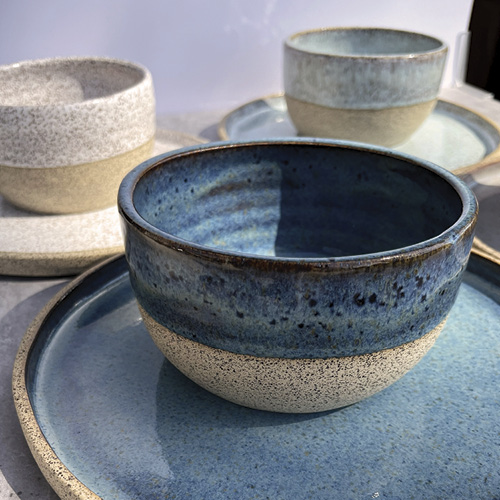 In the Potter's Kitchen: Slab + Wheel Made PlatesI have combined the use of both slab building and wheel throwing to make creating plates more efficient and precise.
In the Potter's Kitchen: Slab + Wheel Made PlatesI have combined the use of both slab building and wheel throwing to make creating plates more efficient and precise. -
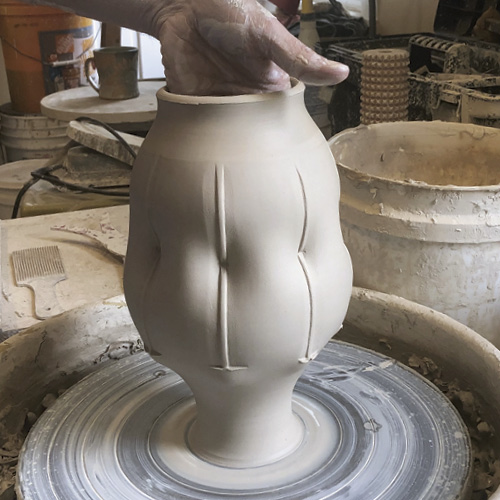 Pinstripe TeapotMy altered pots stem from a combination of found-object wood blocks and freehand stretching of the overall form. This pairing gives me spontaneously soft-looking pots.
Pinstripe TeapotMy altered pots stem from a combination of found-object wood blocks and freehand stretching of the overall form. This pairing gives me spontaneously soft-looking pots. -
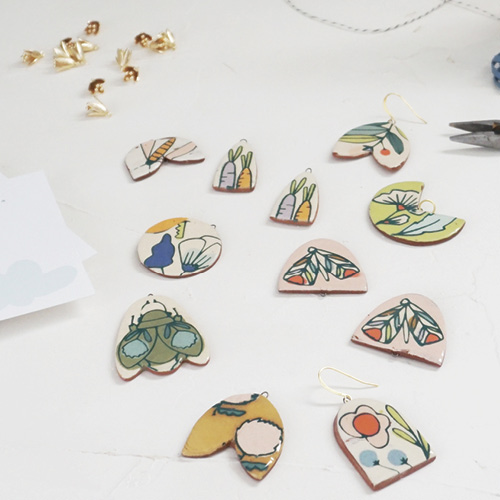 In the Studio: Online WholesaleDiversifying income streams is crucial for making a life as an artist. This means exploring various avenues beyond just selling artwork directly.
In the Studio: Online WholesaleDiversifying income streams is crucial for making a life as an artist. This means exploring various avenues beyond just selling artwork directly. -
 In the Studio: Meet Ben EberleI’m inspired by fearless makers, artists who are fiercely independent and confident in their direction. I’m drawn most to artisanal vessels that not only hold a space, but also define that space.
In the Studio: Meet Ben EberleI’m inspired by fearless makers, artists who are fiercely independent and confident in their direction. I’m drawn most to artisanal vessels that not only hold a space, but also define that space. -
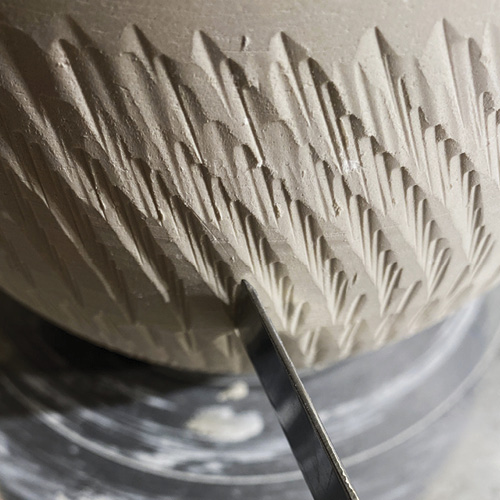 In the Studio: ChatteringChattering is a fun and interesting way to elevate a form by adding visual movement and texture.
In the Studio: ChatteringChattering is a fun and interesting way to elevate a form by adding visual movement and texture. -
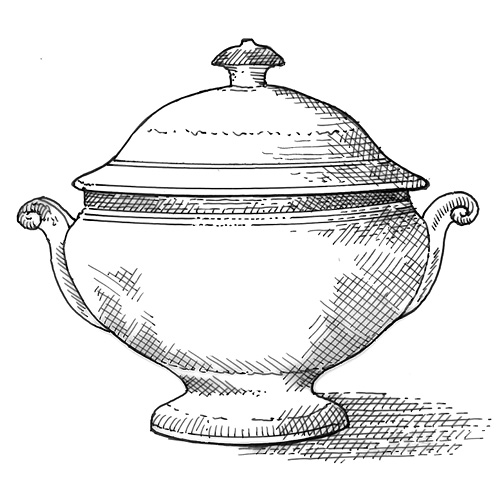 Pottery Illustrated: Weights and SizesApproximate fired-ceramic dimensions (in inches) and wet-clay amounts (in pounds) for functional wheel-thrown forms.
Pottery Illustrated: Weights and SizesApproximate fired-ceramic dimensions (in inches) and wet-clay amounts (in pounds) for functional wheel-thrown forms. -
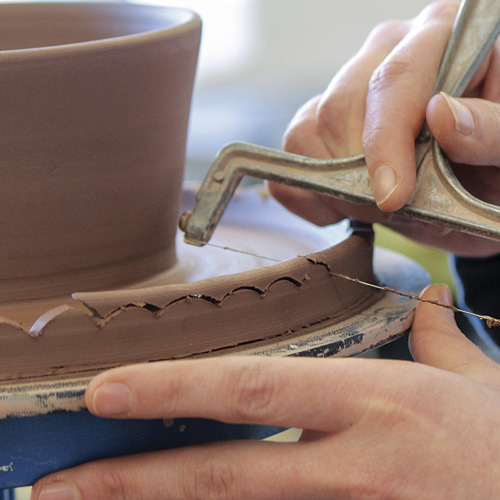 Editor's Note: Anything GoesThis issue focuses on all things wheel throwing. While we share several great projects that you can follow step by step, consider combining techniques.
Editor's Note: Anything GoesThis issue focuses on all things wheel throwing. While we share several great projects that you can follow step by step, consider combining techniques. -
Supporters of Pottery Making Illustrated — March/April 2024
-
 Pottery Illustrated: Woven HandlesOriginal drawings by Lucy Kitto from The Japanese Pottery Handbook, ©1979, 2014 by Penny Simpson, Kanji Sodeoka, and Lucy Kitto.
Pottery Illustrated: Woven HandlesOriginal drawings by Lucy Kitto from The Japanese Pottery Handbook, ©1979, 2014 by Penny Simpson, Kanji Sodeoka, and Lucy Kitto. -
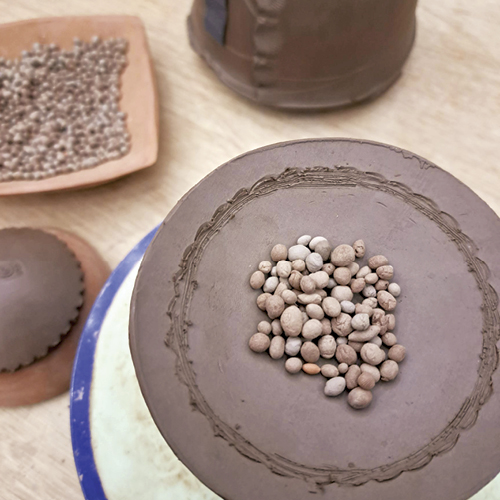 In the Potter's Kitchen: Jingle-Jar LidsMy work brings together this deep love for the sea and a sense of whimsy into a piece of artwork for your hands.
In the Potter's Kitchen: Jingle-Jar LidsMy work brings together this deep love for the sea and a sense of whimsy into a piece of artwork for your hands. -
 Cane Handles for TeapotsOnce you have decided on the shape of your pot, and the diameter and style of the lid, and you’ve placed the spout appropriately, you need to figure out what kind of handle to use.
Cane Handles for TeapotsOnce you have decided on the shape of your pot, and the diameter and style of the lid, and you’ve placed the spout appropriately, you need to figure out what kind of handle to use. -
 Salt & Pepper ShakersThe salt-and-pepper shakers on a tray are a great reflection of our collaborative process, combining Grace’s magical sense as an illustrator and Dennis’ slab-building prowess while sourcing imagery from many of our shared interests.
Salt & Pepper ShakersThe salt-and-pepper shakers on a tray are a great reflection of our collaborative process, combining Grace’s magical sense as an illustrator and Dennis’ slab-building prowess while sourcing imagery from many of our shared interests. -
 Tree of Life CandlestickMy own work is influenced by Folk Art. The Tree of Life candlesticks I have made over the past few years were inspired by original designs and techniques produced in Mexico.
Tree of Life CandlestickMy own work is influenced by Folk Art. The Tree of Life candlesticks I have made over the past few years were inspired by original designs and techniques produced in Mexico. -
 Citrus ReamerSewing patterns and steel-panel construction research spearheaded the development of my understanding of building shapes with flattened templates.
Citrus ReamerSewing patterns and steel-panel construction research spearheaded the development of my understanding of building shapes with flattened templates. -
 Pinched Accordion-Style PitcherMy pinch pots have a sense of accordion-like compression, enhanced by handle placement and my use of terra sigillata.
Pinched Accordion-Style PitcherMy pinch pots have a sense of accordion-like compression, enhanced by handle placement and my use of terra sigillata.
- 1 (current)
- 2
- 3
- 4
- 5
- 6
- 7
- 8
- 9
- 10
- »
